miHoYo: The Chinese Gaming Studio That Caught Jensen Huang’s Eye
A 2019 profile traces how three anime-loving engineers turned a student startup into one of China’s most ambitious gaming studios
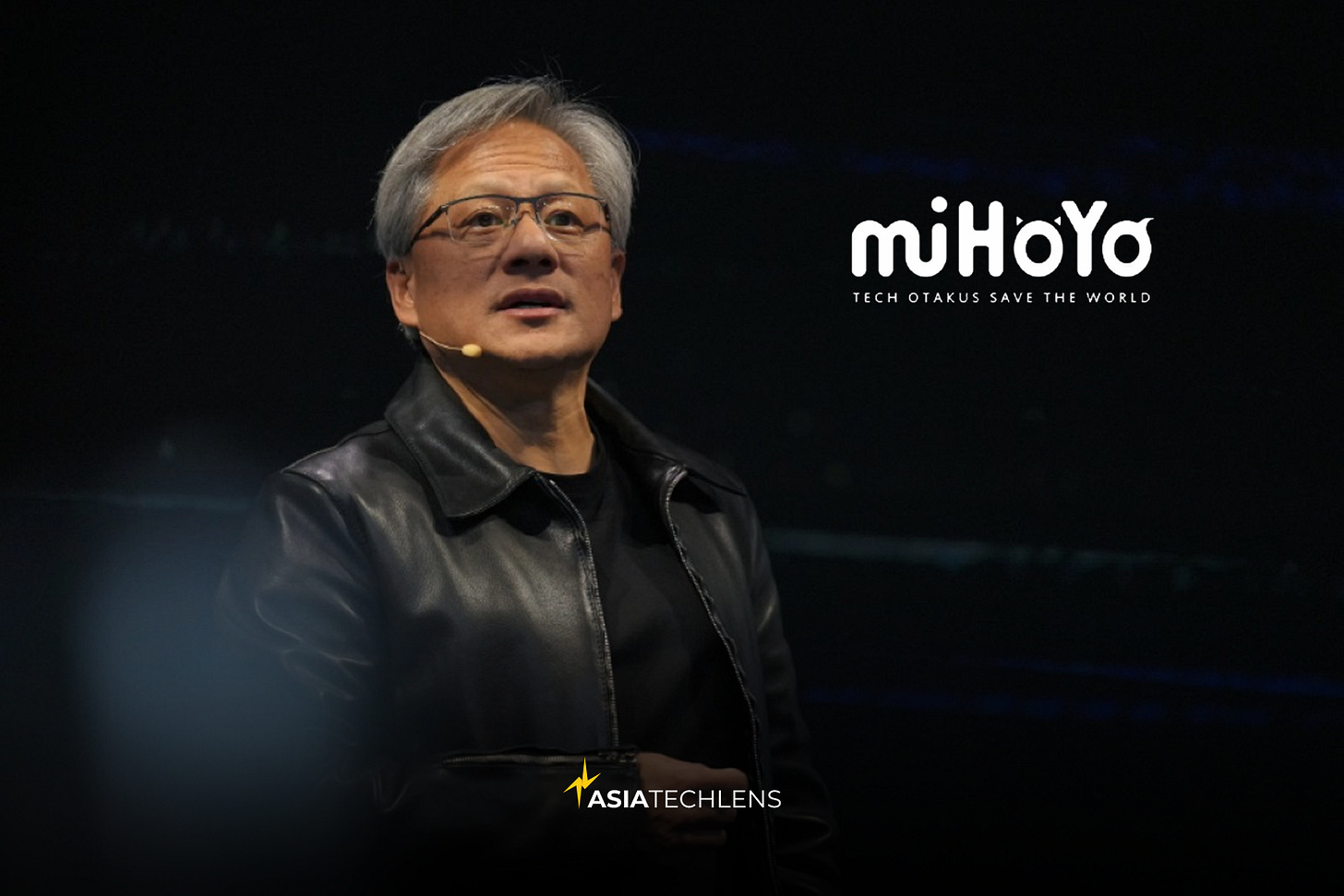
Editor’s Note:
At the opening ceremony of the 2025 China International Supply Chain Expo, NVIDIA CEO Jensen Huang made headlines - not just for appearing in traditional Tang-style clothing, but for naming a group of Chinese companies he sees as leading the world in innovation. Among the familiar tech giants like Tencent, Alibaba, Baidu, and ByteDance, Huang also mentioned miHoYo, a Shanghai-based gaming studio.
For many outside the gaming or anime circles, miHoYo may not be a household name. But in the world of interactive entertainment, the company has built a strong reputation for blending artistic ambition, anime aesthetics, and cutting-edge technology, particularly through titles like Honkai Impact 3rd.
To give our international readers context on how miHoYo got here, here’s an English language translation of a 2019 profile entitled “miHoYo President: Making Great Games Takes Patience and Craftsmanship” that was originally published by The Paper (澎湃). All credit belongs to the original author and outlet.
While some business metrics have since changed, this article offers a compelling look at the company’s early mindset, its ACG (animation, comic, game) roots, and its place within Shanghai’s rise as a cultural innovation hub.
miHoYo President: Making Great Games Takes Patience and Craftsmanship
In 2011, 24-year-old Liu Wei, a graduate student at Shanghai Jiao Tong University, teamed up with classmates Cai Haoyu and Luo Yuhao. The trio secured a 100,000-yuan (around $15,500 based on the 2011 exchange rate) grant from the “Eaglet Program” run by the Shanghai Technology Entrepreneurship Center for University Students, plus six months of free use of a 50-square-meter office, and founded miHoYo.
All three were avid manga readers and gamers who studied computer science, so it was natural that they set their sights on anime-style games. One took charge of commercialization, another product development, and the third handled every aspect of running the company.
Seven years into its entrepreneurial journey, miHoYo launched Houkai Gakuen 2 and Honkai Impact 3rd, both of which amassed tens of millions of registered users. In 2018, the company achieved nearly 2 billion yuan in revenue and contributed over 200 million yuan in taxes.
Building around the Honkai IP, miHoYo expanded into anime, novels, and music. The series’ storyline and world-building earned a devoted following within anime culture.
In the minds of this young team with an average age of around 30, miHoYo holds an even greater ambition: to become a world-class Chinese animation company.
On its official website, miHoYo outlines its corporate vision: In addition to deepening our expertise in the gaming industry, we are also committed to continuous exploration and innovation across a broader range of fields, including original IP development, comics, novels, animation, and merchandise.
miHoYo President Liu Wei gave an exclusive interview to The Paper (www.thepaper.cn), reflecting on his journey as a founder:
“Everything we do is to provide our target users with high-quality, domestically-created original anime content.”
Now Liu Wei can proudly say, “I feel that domestic anime is getting better and better, and we ourselves are also one of the forces within it.”
“When it comes to creating great work, I believe, patience and craftsmanship are extremely important.”
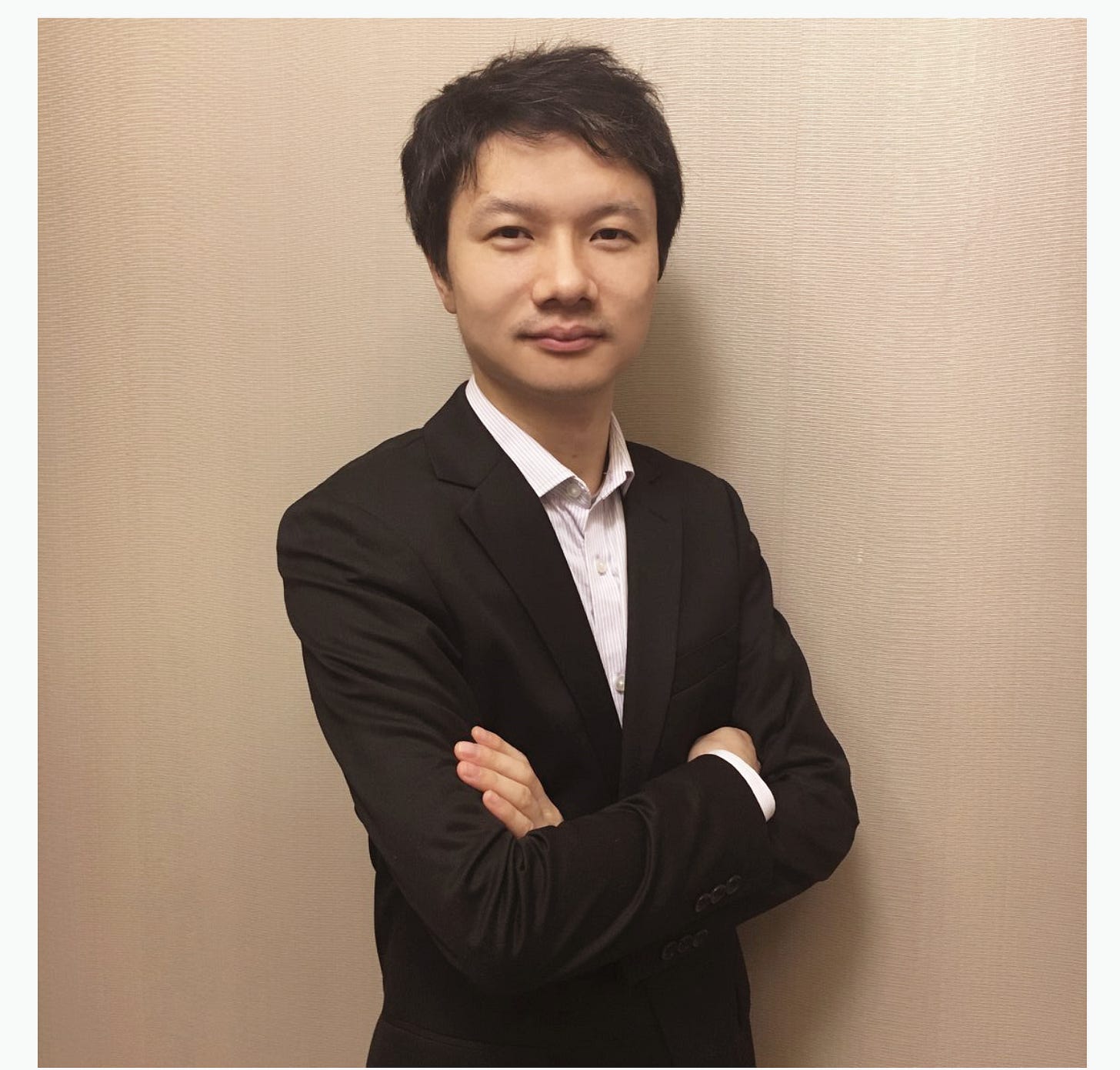
College Student Startup Story
In 2011, smartphones became widespread, and WeChat was launched, marking the rise of mobile internet. This created the ideal scenario for online games to shift from PCs to mobile devices. Starting in 2014, Chinese animation began breaking into a market long dominated by Japanese and American anime. In 2015, Monkey King: Hero is Back became a blockbuster hit, reflecting the growing audience preference for domestic animated works.
“We happened to catch two waves of opportunity - the intersection of these two trends,” said Liu Wei.
Before founding miHoYo, Liu Wei, Cai Haoyu, and Luo Yuhao had already been through multiple entrepreneurial ventures. They won the silver award at the CAS Technology Innovation Competition, took first place in the campus division of Shanda Magi’s inaugural Flash Game Contest, and released their original game Fly Me 2 the Moon, which earned featured spots on the Japanese and U.S. App Stores.
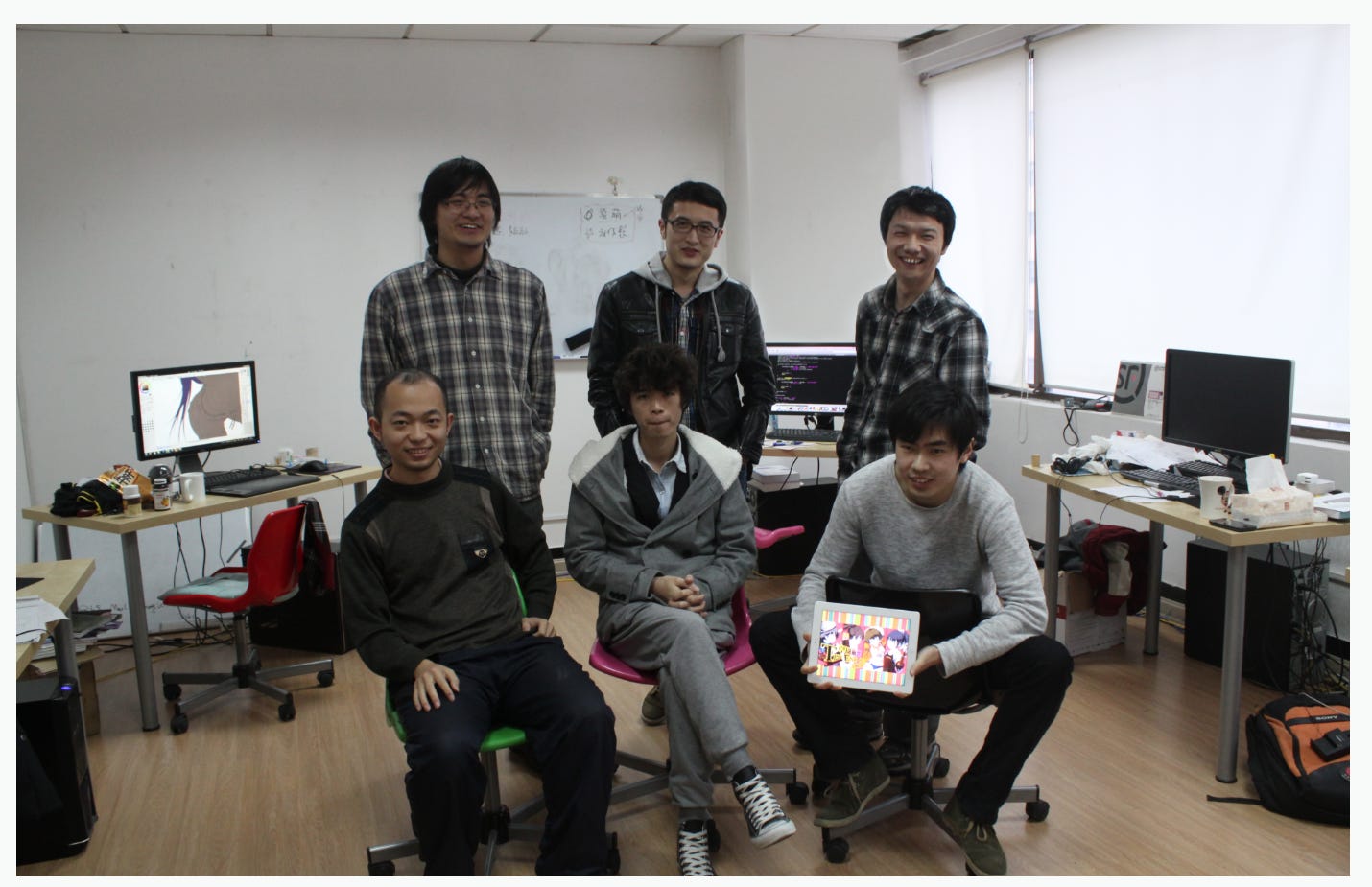
By the time they officially launched miHoYo, the founding team had already amassed considerable experience.
“My partners and I were classic STEM nerds from Shanghai Jiao Tong University. And as nerds, we were really into anime and video games. Back then, we referred to our favorite anime, comics, and games as 'ACG' - A for animation, C for comic, and G for game. We were so passionate about ACG that we wanted to do something related to it. But at the time, there were hardly any domestic companies creating original ACG content. So we realized that if we wanted to work in ACG, we had to start our own business - it was the only way to do what we truly loved," Liu Wei explained
However, in 2011 and 2012, launching an anime-related startup was hardly considered a profitable venture. The domestic animation and gaming industry had very few developers at the time. In 2012, miHoYo released Honkai Academy, the first installment of their Honkai series, but this single-player game failed to attract much attention.
“At the time, many people believed that domestic animation had no future, because no one had ever made money from it,” Liu Wei recalled.
During this period, some investors did express interest in miHoYo and offered funding, but only if the team switched projects to develop market-tested genres like the Three Kingdoms or martial arts-themed games. This was rejected by the miHoYo team.
“Although we really wanted to continue with our startup, the foremost purpose was still to do what we wanted to do,” said Liu Wei.
“If we couldn’t do what we wanted and were just doing it for money… back then, we were still very determined…we insisted on pushing forward. The worst case would be that we just take things one step at a time.”
Despite receiving very little external funding, Liu shared that the team at miHoYo “toughed it out through much of 2013,” and the company, finally, had its breakthrough in 2014.
In March 2014, miHoYo released the 2D shooting game Houkai Gakuen 2 on the App Store, featuring major improvements in core gameplay and art design. On the day of its release, it ranked #1 in downloads among paid apps. With support from platforms like Bilibili and AcFun, the moe-style Houkai Gakuen 2 effectively reached anime audiences and even received organic promotion and recommendations from fans.
In October 2016, the 3D action game Honkai Impact 3rd launched on the App Store and was featured on Apple's homepage recommendation the very next day. Utilizing the Unity 5 engine, the game employed 3D character models and environmental rendering to achieve a distinctive 2D anime-style visual aesthetic, establishing itself as one of China's most technically advanced games in terms of artistic presentation at the time.
By the end of 2017:
Houkai Gakuen 2 had over 44 million registered users, and total in-game purchases exceeded 1 billion yuan.
Honkai Impact 3rd had over 22 million users, with in-game revenue surpassing 1.1 billion yuan.
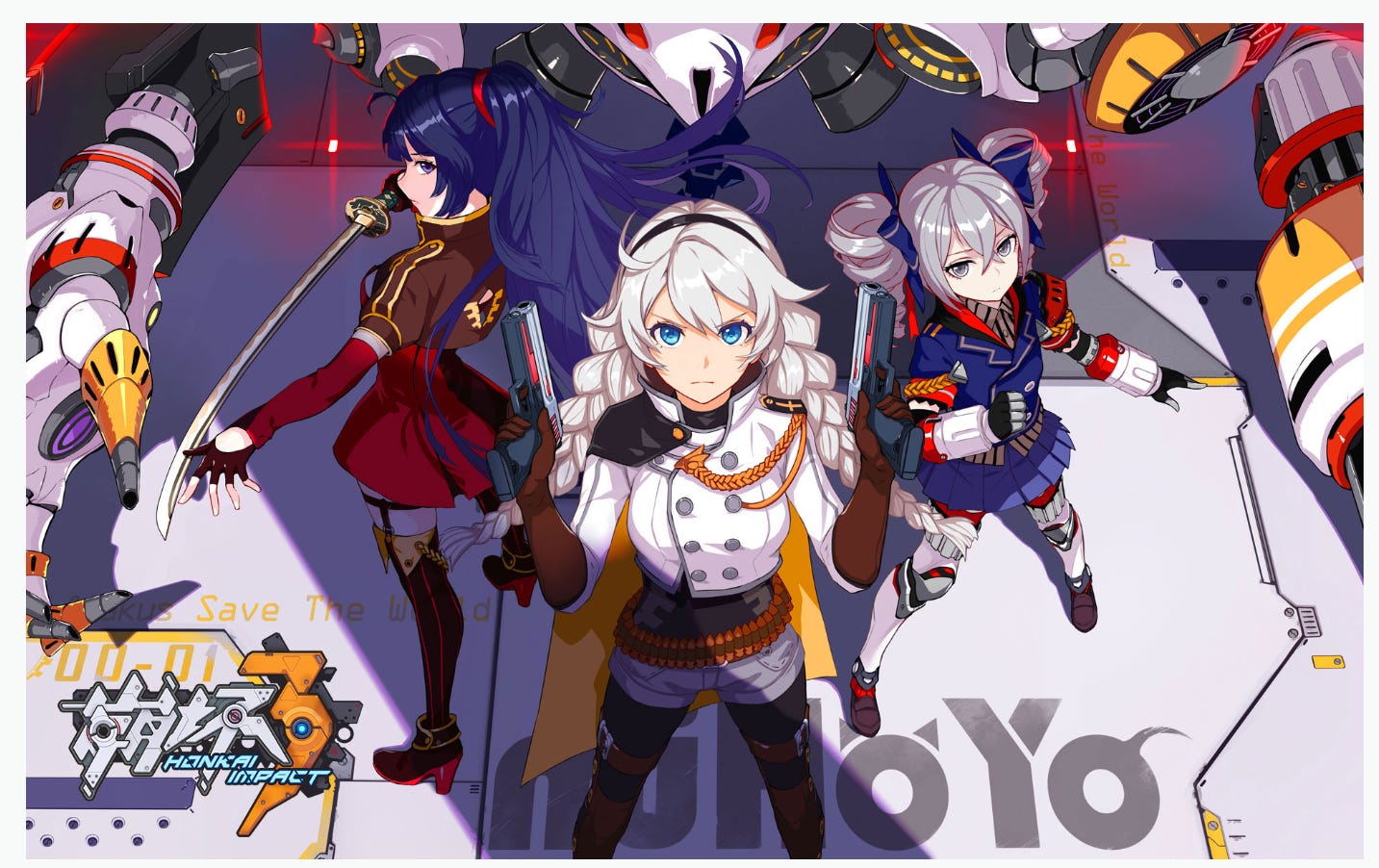
In early 2017, miHoYo filed an application for an A-share listing with the China Securities Regulatory Commission (CSRC). Its draft prospectus showed the company’s operating revenue was 170 million yuan in 2015, 420 million yuan in 2016, and 590 million yuan in the first half of 2017, with net profits reaching 130 million, 270 million, and 450 million yuan, respectively.
As 2018 began, China’s gaming industry came under broad pressure from tightened license approvals, pushing many small and mid-sized studios into a period of consolidation.
However, Liu Wei offered a different perspective:
“For quality-focused companies like ours, we simply concentrate on perfecting our products. As part of the cultural and creative industries, we must prioritize social value over purely economic gains. Therefore, I believe these changes don't negatively affect companies like ours that focus on quality. In fact, they promote greater industry self-discipline, and companies like ours that operate properly will ultimately benefit."
From starting in 2011 to entering its eighth year, miHoYo grew from a 100,000-yuan student startup fund to generating hundreds of millions yuan in profit. Yet Liu Wei says his life hasn’t changed much since the beginning - he’s still buried in work at the office every day. His teammates affectionately call this young founder "Da Wei Ge" (Big Brother Wei).
What has changed, however, is the scale: From a three-person team working in a 50-square-meter free office at the Qinzou Road Student Startup Incubator to just seven employees by the time Houkai Gakuen 2 launched in 2014.
But once Houkai Gakuen 2 became a market success, the company started turning a profit, and its headcount began doubling every year. Today, miHoYo has around 800 employees and has relocated to Putian Technology Industrial Park near Guilin Road subway station. The Caohejing Guilin Road area is home to many Shanghai gaming companies, such as Giant Network and Youzu Interactive.
miHoYo's "Honkai" Series Overview
Unlike many game studios that rely on licensed anime IP, miHoYo’s Honkai series is a wholly original creation.
In miHoYo’s lore, Honkai refers to a world plagued by survival challenges such as war and natural disasters. The people living in this world must overcome various hardships to protect the things they cherish.
Each character in the Honkai universe is crafted with a distinct personality. Take Kiana Kaslana, the protagonist of Houkai Gakuen 2, she was assigned detailed traits including height, weight, family background, combat style, and even facial expression preferences. If a character’s personality didn’t stand out, the team would send them back for a complete redesign.
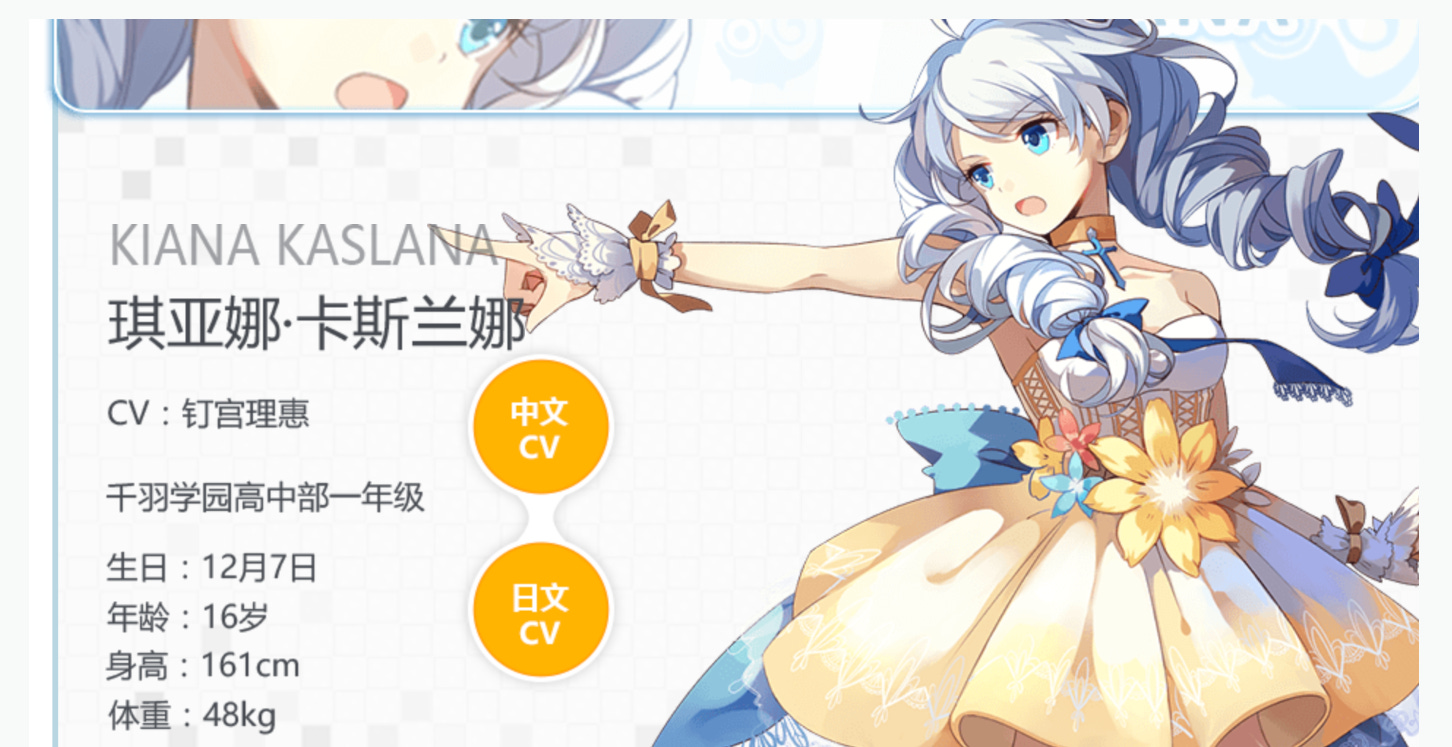
For anime enthusiasts, falling in love with a game character can lead to exploring that character's anime series, listening to voice actors' songs, purchasing merchandise. These elements form the ecosystem of the anime industry and have been integral to the development of the Honkai IP. miHoYo has launched original serialized comics and actively encourages fans to create derivative works based on the IP, even soliciting fan submissions.
According to the IPO prospectus, the comic Honkai 3rd has accumulated over 180 million views, while the Houkai Gakuen 4-Koma surpassed 55 million views, and animated videos have received over 14 million views.
“For users like us, once you've built a virtual world that feels immersive, the level of identification and emotional connection we feel with that world far exceeds what most people imagine,” said Liu Wei.
Since its inception, miHoYo has recruited a wide range of anime industry professionals - from animation directors to music composers - even forming in-house teams to design merchandise.
miHoYo’s integrated approach clearly draws inspiration from mature international models - from Disney’s multimedia empire to Pokémon’s transmedia ecosystem in Japan. One of miHoYo’s co-founders, Cai Haoyu, is a huge fan of the Japanese anime Neon Genesis Evangelion (EVA). Aired in the 1990s, EVA is widely regarded as one of the greatest anime series ever made. Cai reportedly wore EVA-themed T-shirts to work almost daily during the summer - though in recent years, he’s switched to miHoYo’s own branded tees.
“Many people enter the gaming industry just to make money. That wasn’t our reason. We genuinely love anime,” Liu Wei said.
“Around our original IP, we’ve created novels, comics, animations, music, and game merchandise. It's just that other methods indeed aren't as commercially mature as games."
However, "we see ourselves as an anime IP company, an anime company centered on original IP - this is the direction we're striving for."
In Liu Wei’s view, China’s cultural and creative industries aren’t short on ideas, what they lack is production capacity and industrial-grade execution. For miHoYo specifically, each animated release is backed by three years of preparation and internal development, ensuring the quality lives up to high expectations.
“How can you possibly make something good just by working fast for a year or two? Disney has been doing it for 90 years. So, I believe there are a few basic conditions for making high-quality original Chinese animation: First, there must be financial support, second is patience, and third is craftsmanship. Only then can you truly create good work.”
“Right now, we are developing capabilities in two areas,” said Liu Wei. “One is combining our own creativity with Chinese culture to produce original works that meet the needs of Chinese users. The other is that, at this stage of our development, we believe our core competitiveness still lies in improving our production capabilities.”
Cultural Confidence Rooted in Shanghai
miHoYo’s entrepreneurial journey is a microcosm of the development of Shanghai’s cultural and creative industries.
Shanghai has incubated many companies such as Bilibili, China Literature Group, New Culture Media, Shanda Games, Giant Network, Youzu Interactive, and Ximalaya FM. Animation, film and television, gaming, online literature, and online audiovisual content have already become cultural symbols of Shanghai.
According to data from 2017, the cultural and creative industry had become an important pillar industry of Shanghai’s national economy. The total output of Shanghai’s cultural and creative industry reached 1.0433 trillion yuan, accounting for more than 12% of the city’s GDP; its added value was 339.5 billion yuan, a year-on-year increase of 8.2%.
At the end of 2017, Shanghai issued the “Several Opinions on Accelerating the Development of the City’s Cultural and Creative Industry” (known as the 50 Cultural Innovation Policies), proposing that within the next five years, the added value of Shanghai’s cultural and creative industry would account for 15% of the city’s GDP, and by 2030, the figure would rise to 18%, with the goal of basically completing the construction of an internationally influential cultural center, ultimately achieving a globally influential cultural/creative center by 2035.
The policies also include promoting innovation breakthroughs in key areas such as film and television, performing arts, and online culture, and accelerating the construction of a global film and TV production center and a global original animation and gaming center.
In 2018, Shanghai took a step further to introduce the "Shanghai Cultural Brand", promoting innovation in key areas like film and television, performing arts and new media by accelerating the construction of global film and TV production studios, animation studios, art auction houses and Asian performing arts houses.
Liu Wei believes high-quality domestic anime must confidently go global: "Only by creating products with worldwide influence - products that succeed across all markets - can we prove their quality and competitiveness. This is our current goal."
And Shanghai’s policies have given miHoYo the cultural confidence to expand overseas.
“The city-level 50 Cultural Innovation Policies are a strong incentive for cultural and creative enterprises like us,” Liu Wei told The Paper.
“Our confidence in succeeding both nationally and globally stems from the fact that we are based in Shanghai, and we feel that there is no gap between us and anywhere else in the world. We have a strong sense of cultural confidence… and we have very favorable conditions for recruiting international talent.”
Speaking specifically on the business development level, Liu Wei explained that many foreign cultural and animation companies chose Shanghai as their entry point into the Chinese market, and in doing so, left behind and nurtured a large pool of talent.
"The international talent pool in Shanghai greatly enhances our production standards and strengthens the global competitiveness of original Chinese animation."
*This article is a direct translation of a piece originally published by The Paper (澎湃). All credit belongs to the original author and outlet

